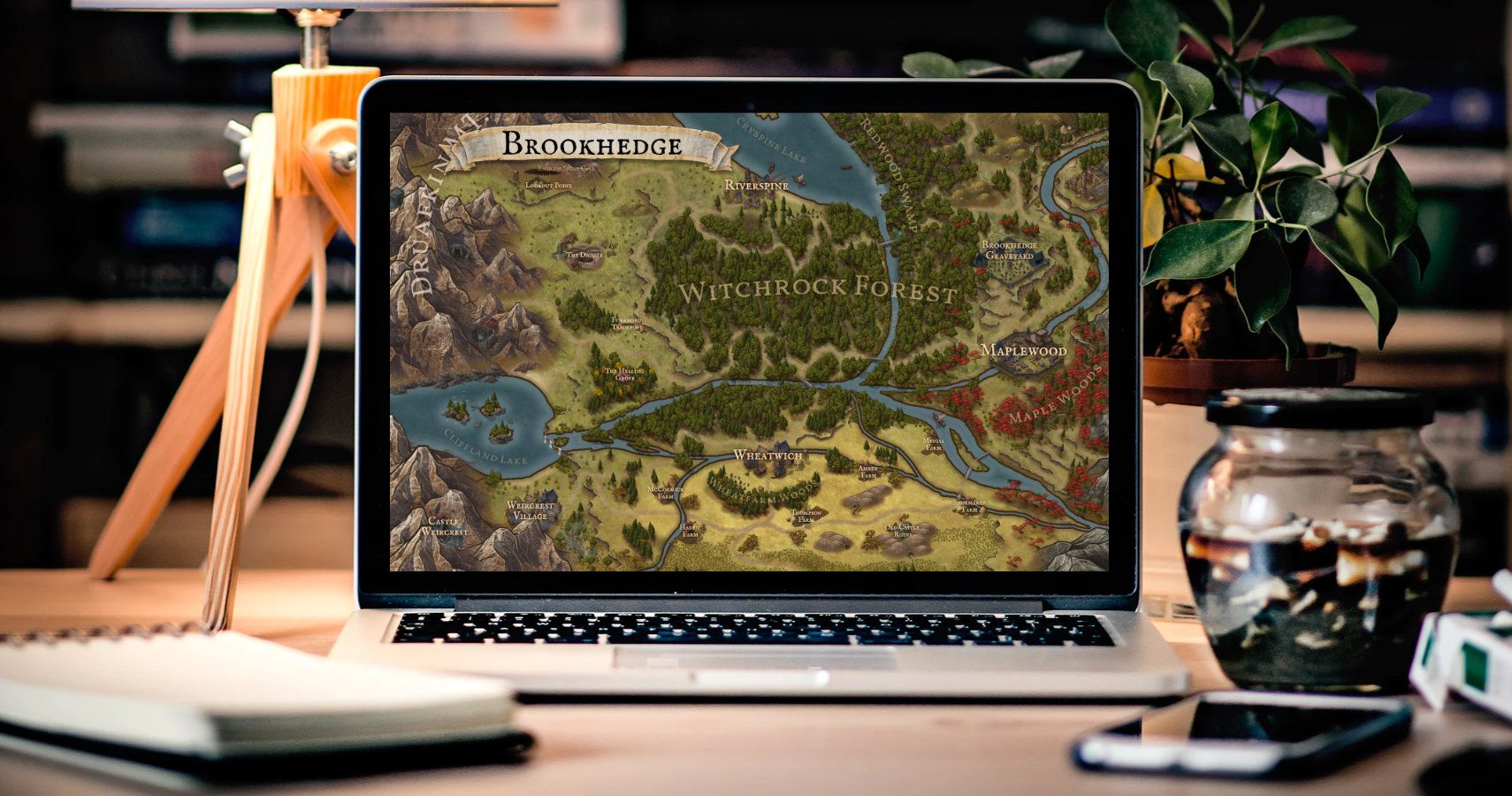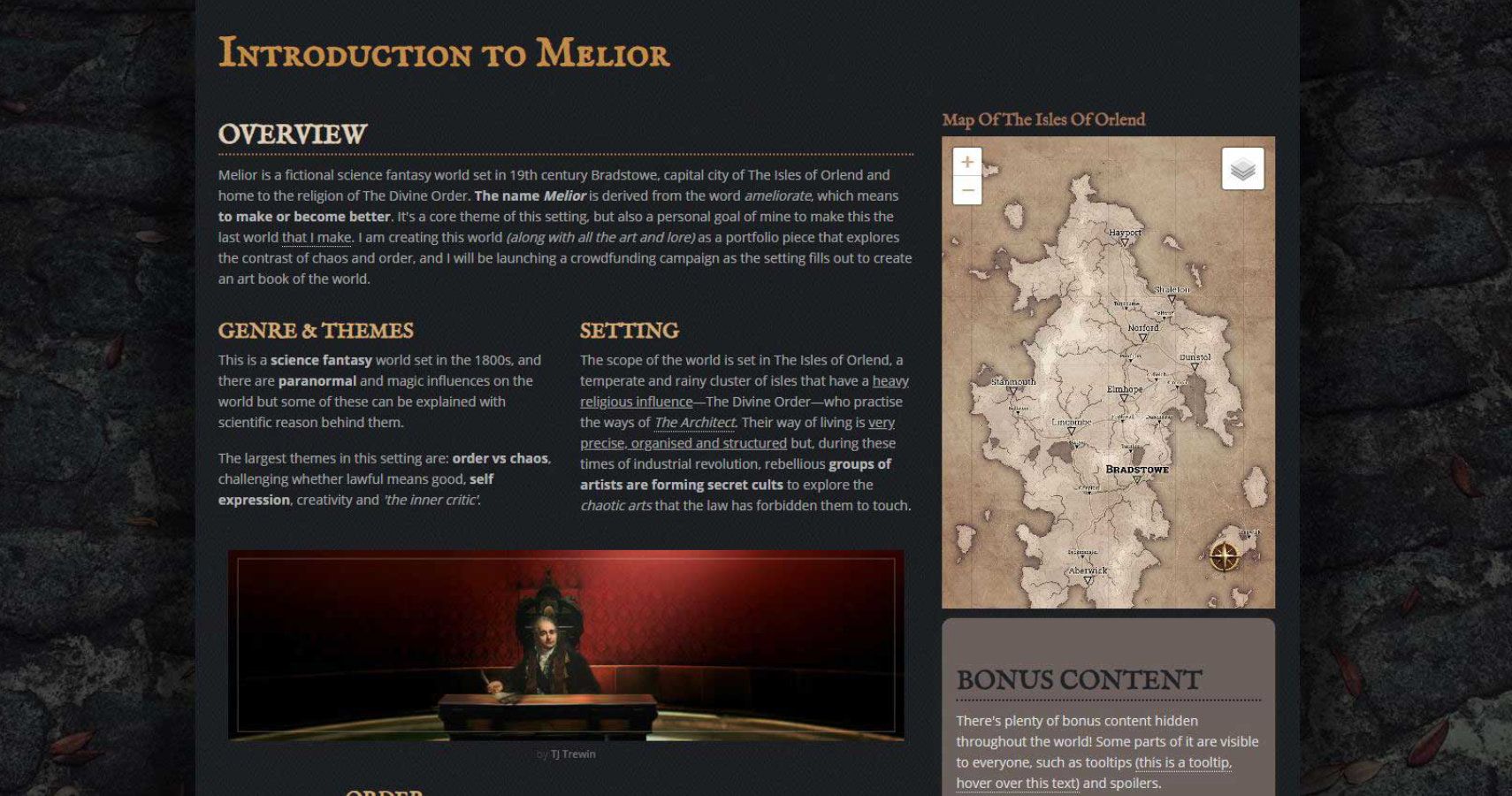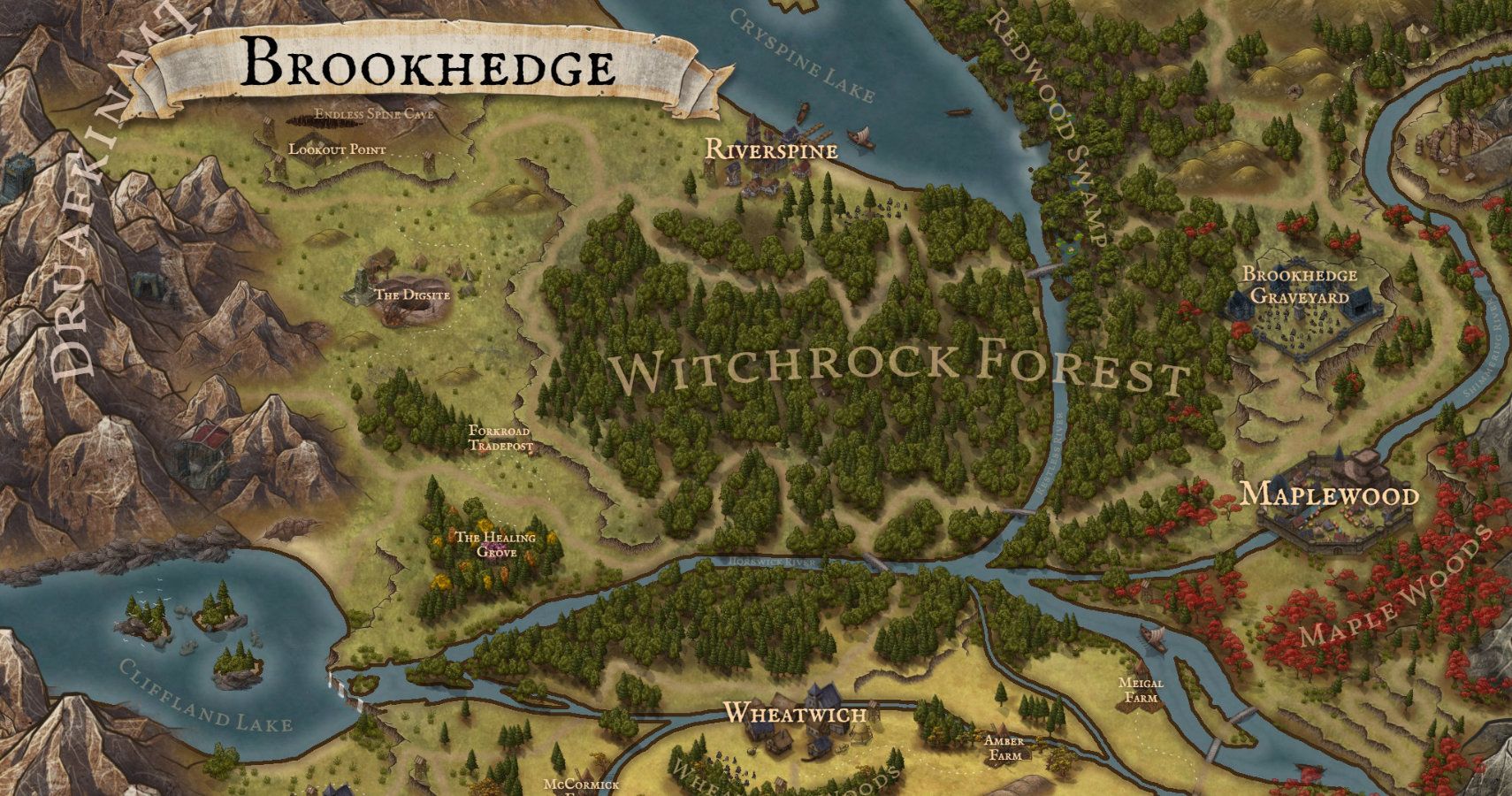Creating your own gaming universe is hard, but you can make your life a lot easier if you use software to aid your world building. We sometimes forget how fortunate we are to live in the times that we do. Nowadays, thanks to miniaturization and advancements in technology, we are able to carry everything on a laptop or tablet. In today's Dungeons & Dragons homebrew tip, we dive into the arcane magic of software and how it can help improve your world building.
First, let me begin by saying, ”There is no wrong way” for managing your world building. If your old school paper-based system works for you, great! But, I encourage you to stick around till the end, as we look into some alternative methods you may not be aware of. You may even be surprised at the depth of some of the offerings.
Let’s Talk About Text, Baby
World building involves a lot of writing, and organizing that writing can be a headache. In ye olden days information was stored on stone tablets, then we migrated to papyrus and vellum. When paper came along it reached the masses and now we even surpassed that, coming full circle to storing information on tablets… again.
Regardless of the storage format, a good organizational system is needed. If you are keeping paper notes you can take inspiration from the Dewey Decimal system. Each page you write has a home, based upon its classification; consequently, all content should be classified by its contents, genre, and type. You can replicate this on a computer using folders and document files. You can even create a searchable database or spreadsheet for your index, but all this relies on good classification in the beginning.
WorldAnvil
Late 2017 saw the launch of WorldAnvil, a dedicated web app built specifically for managing world building. Over the years it has grown up and it continues to receive regular updates and new features. You are able to upload maps and fully annotate them with features such as pins, territory borders, and notes. Data capture is done by filling out forms, each designed for the type of information being entered. Articles can be cross-referenced, can include photos or drawings, and are easy to search. In essence, think of it as a personal encyclopedia for your world.
There are also extra tools built specifically for authors and content creators, and GMs/DMs are no exception, with extensions for many roleplaying systems available. The creators are world builders and gamers and are truly passionate about the project, no big corporations here. This brief synopsis doesn’t do the software justice, the best way to see how it can help you is to try it out.
Let's Talk About Cartography
In a previous homebrew tip, we talked about making our maps digitally using one or more of the generic art packages available like Adobe Photoshop, Gimp, and Affinity Designer. There are many more to choose from but typically you will be looking for the easy ability to work with pre-created map assets. These could be in the form of copy and paste map tiles, icons and fonts. Thankfully most if not all allow apps this. You should also be looking for a program that allows you to work with custom sizable grids and snapping. This is particularly handy when creating dungeon maps.
While there can be an advantage to using a generic art package, you will be glad to hear that there are a couple of options available that are built specifically for map-making.
Inkarnate
Inkarnate is a web-based application built for map-making. It allows you to not only build beautiful world and region maps but also city, town, and village maps. The art assets are amazing and if you punt for the Pro version there are over 1600 to select from. New art is added on a regular basis and your final work can be rendered at a whopping 8K! Check out inkarnate.com for yourself for free.
Dungeon Fog
DungeonFog is another web-based application, but this time the focus is on dungeon and tile-based encounter maps. Using pre-designed tiles you are able to quickly build your maps across a grid. Each cell within the grid is about the size of a human allowing you to easily calculate distances and whether wandering monsters are within attack range etc. In addition to the editor, there is a GM mode allowing you to store your game notes for the map, and a viewer mode which can be used when running a game, with areas unexplored hidden by ‘dungeon fog’.
Flowscape
Flowscape is an outlier when it comes to map-making. Strictly speaking, it isn’t designed for the task at hand. However, it does allow you to build a navigable 3D environment that you can use instead of a map. This all sounds complicated, but trust me when I say it isn’t; you simply paint the scene using the tools and pre-built assets included. Seeing is believing, so they say and these lifelike 3D renders can breathe life into your games.
Let’s Talk About… What May Be.
There’s plenty of software out there that we haven’t had a chance to cover in this article. If something is working for you, don’t feel you have to change. There is no wrong way to do this, just different ways that work better for different individuals. I do hope that what little we have covered will help you and inspire you to create more mystical worlds for us to explore.
Remember, the tools don’t make a good world builder. It's creativity and dedication to the craft that does. Practice, write, and sketch often. Reach out for feedback from your friends and fellow gamers and let their responses fuel the fire. Most of all, enjoy yourself and have fun with what you are doing.



